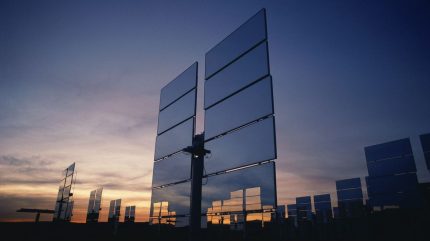
The Biden administration announced in late August that it had finalised a proposal to increase the use of solar energy on federal lands in 11 western states.
The BLM plans to designate more than 31 million acres of public lands as part of a larger effort to speed up the approval and construction of all manner of major infrastructure projects, most notably solar arrays and storage.
In January, a draft plan was published to update the original 2012 Western Solar Plan introduced during former President Obama’s term, which began the process.
This policy created specific zones for solar projects in six states: Arizona, California, Colorado, Nevada, New Mexico and Utah. Recent additions include Idaho, Montana, Oregon, Washington and Wyoming.
The identified areas have high solar potential and minimal impact on wildlife and plant habitats, another plus for the permitting process, which the US is trying to speed up to meet its renewable goals.
BLM’s spokesperson emphasised to Power Technology that “it is a proposed rule that has been shared with the public for comment and is not a final action”.

US Tariffs are shifting - will you react or anticipate?
Don’t let policy changes catch you off guard. Stay proactive with real-time data and expert analysis.
By GlobalDataThey added that the government “held dozens of public meetings across the west over the last few years and shared the draft Western Solar Plan in January of 2024, following a notice of intent on this action back in 2022”.
Principal Deputy Assistant Secretary for Land and Minerals Management Steve Feldgus said in a statement that the US is not only “protecting our public lands but also ensuring that permitting for solar projects moves faster and more efficiently, avoiding conflicts and striking the right balance as we advance clean energy and safeguard the environment”.
The administration aims to quicken the appearance of enhanced power transmission, wind and solar farm projects in order to decarbonise the power sector before the November elections.
“We have been really pushing ourselves to use our executive authority wherever possible to improve the federal permitting process,” White House Deputy Chief of Staff Natalie Quillian said to Reuters.
The Western Solar Plan also aligns with Biden’s Invest in America agenda, which aims to transition the country to clean energy and achieve a 100% clean electricity grid by 2035.
Developing solar energy in the US
Currently, the energy mix in the US remains geared towards hydrocarbons, which account for almost 60%, while renewables (of all sorts) make up just under 22%, with nuclear producing just over 18% of the the nation’s power, according to the Energy Information Administration.
The current administration has recently approved 40 renewable energy projects on public lands. These projects consist of nine solar energy projects in California, New Mexico and Nevada, which will help achieve the goal of bringing online 25GW of green energy by 2025, well ahead of schedule.
The BLM has also designated approximately 870,000 acres of public land for solar energy development, which could potentially have a capacity of 100GW of electricity. Additionally, more than 19 million acres have been identified as open for potential solar development, subject to legal processes and examinations.
Laws in many Western states require energy companies to generate a portion of their energy from renewable sources, leading to increased interest from solar developers. The solar energy sector is also experiencing rapid growth as it adds more capacity, aided by favourable tax credit policies.
The US Government made incentives available for developing clean energy systems for renewable energy development. For instance, businesses can claim a credit on their federal tax return based on qualified renewable energy equipment costs under the Business Energy Investment Tax Credit.
Clean Renewable Energy Bonds are also available to local government entities, public power providers and cooperative electric companies, all to fund renewable energy projects.
Certain states provide cash incentives or financial aid to offset some expenses associated with installing renewable energy systems. Government-backed initiatives with advantageous loan conditions also facilitate funding renewable energy system installations.
The EIA forecasted that the electric power sector’s solar capacity will increase by 38% to 131GW by the end of 2024, compared with 95GW at the end of 2023, as planned solar projects come online.


